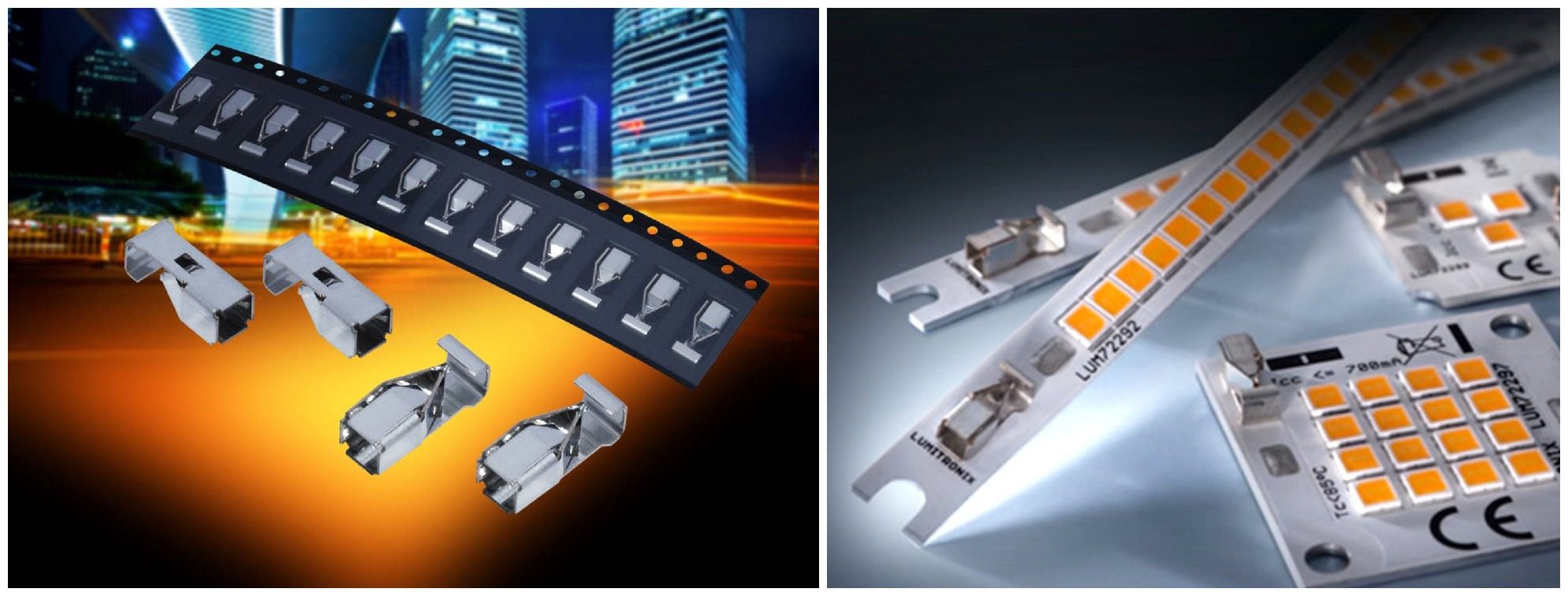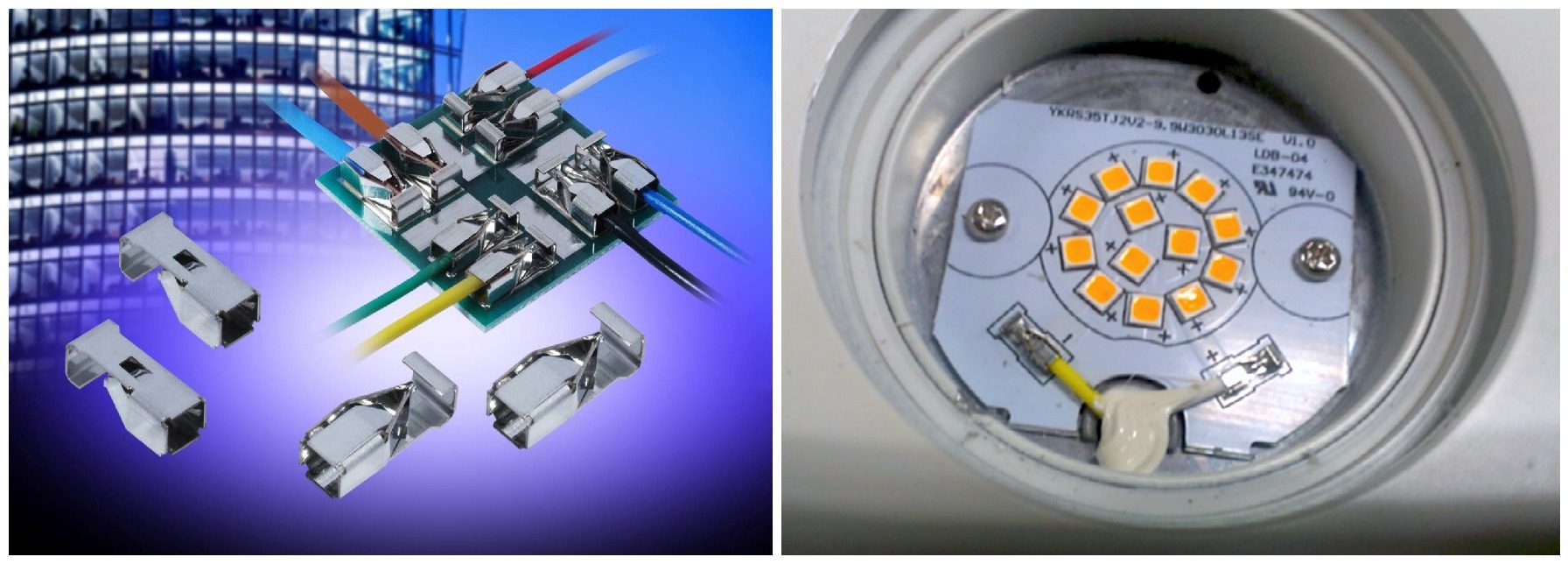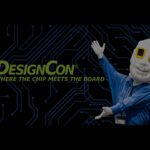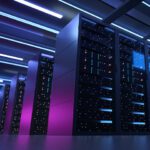Choosing Optimal Connectors for LED Lighting and Industrial Electronics Applications
Today’s LED lighting and industrial electronics applications can achieve greater efficiency, performance, and reliability by employing connectors with high power densities and small form factors. Which connector characteristics best support these goals? This specification guide can help you decide.

The Sunshine Skyway Bridge in Saint Petersburg, Florida, is equipped with 1,800 LED lights enabled in part by advanced connectors designed to withstand harsh outdoor and marine environments. (Photo courtesy of Mark Rapien.)
The connector selection process for product designs in all but the harshest environment markets has historically prioritized part cost over other component characteristics. However, size, weight, and power (SWaP) optimization is now becoming a priority in most markets as accessible, fast, reliable, and connected products proliferate in every aspect of our lives.
To specify the optimal connectors for LED lighting and industrial electronic products, design engineers should consider the following characteristics.
Electrical Characteristics for LED Lighting
Before delving into the form, fit, and supplementary functions of a connector, ensure that its electrical characteristics are suitable for the intended application. These include voltage rating, proof voltage, current rating, current derating, contact resistance, insulation resistance, and rated operating temperatures.
Voltage Rating: A connector’s voltage rating, or its working voltage, is the maximum continuous voltage it can handle during regular operation without physical deformation or electrical failure. A connector’s specific voltage rating is a function of its insulation material properties and contact pitch.
Proof Voltage: Proof voltage is the highest voltage a connector can handle before it reaches its breakdown voltage, or the potential difference at which a disruptive discharge occurs and the connector fails. Connectors are tested near their breakdown voltage — at their dielectric withstanding voltage, which is typically around 75% of their breakdown voltage — to ensure that they’re safe to use below said voltage without surface arcing. Proof voltages are dependent on a connector’s insulator material, clearance distance, and creepage distance, and higher proof voltages indicate a lower probability of surface arcing failure. However, the application environment and operating conditions can affect these results.
Current Rating: A connector’s current rating, or working current, defines the maximum current in amperes (A) at which it’s guaranteed to work normally and is a function of contact materials, contact resistance at the mating surfaces of the conductive elements, and operating temperature. Designers should choose a rated current that meets the application’s environmental temperature and heat dissipation requirements.
Current Derating: It is common practice to derate connectors’ rated currents by a minimum of 20%. Doing so mitigates the temperature rise inside of a connector and provides an extra measure of protection against transient voltages or current spikes that extend beyond normal operation and can cause catastrophic failures. Many connector suppliers provide current derating curve charts to help designers determine whether a particular connector product meets their requirements.

A current derating curve (top) for KYOCERA AVX’s 00-9176 Series IDC Connectors.
Contact Resistance: Contact resistance is defined as the electrical resistance at the intersection of two mated conductive elements and is a function of the contact material, the normal force at the joint, and the surface treatment on the two conductive elements. Connectors with low contact resistance produce and dispel less heat, which helps improve overall product performance and can be achieved with tight joints and clean, pollution- and oxidation-free surface treatments.
Insulation Resistance: When applying voltage across a connector, a measurable amount of leakage current will escape through the weakest point in the insulator. The amount of leakage current depends on the connector’s insulation material, operating temperature, environmental humidity, and environmental pollution. The quantification of this weakness is the connector’s insulation resistance.
Rated Operating Temperatures: Rated operating temperatures are defined as a range extending from the minimum to the maximum temperature at which normal connector operation is guaranteed. Operating a connector outside of this temperature range is likely to result in damage including physical deformation, such as the melting of the plastic housing and insulator, and contact damage resulting from fatigue, oxidation, or plating failure. Failing to operate a connector within its rated operating temperatures can also significantly affect connector performance and cause premature connector failure.
Mechanical Characteristics for LED Lighting
Mechanical characteristics include contact termination systems, wire gauges, insertion and withdrawal force, durability, and form factor.
Contact Termination Systems: Connectors are available with a variety of contact termination systems — including but not limited to crimped wire contacts, insulation displacement contacts (IDCs), low- and zero-insertion-force (LIF and ZIF) spring contacts, and screw terminals — and each has its own unique set of advantages and disadvantages.
Wire Gauges: Wire gauges are typically expressed as a range of wire sizes that wire-to-board and wire-to-wire connectors are compatible with, and they determine a wire’s maximum current carrying capability.
Insertion and Withdrawal Force: These characteristics describe the amount of force required to mate and separate a pair of connectors and are directly affected by connector design characteristics including locking features, wire gauges, crimp contact designs, and crimp quality. A connector’s withdrawal force, or pull force, also directly affects its shock and vibration performance in harsh environments.
Durability: A connector’s durability is measured by the maximum number of insertion and withdrawal cycles (also known as mating cycles) it can withstand before any of its components wear to the point of failure. If a connector is operated within its ratings and below its maximum number of durability cycles, it should exhibit its specified electrical characteristics.
Form Factor: A connectors’ physical size and shape, or form factor, is another critical mechanical characteristic, and especially in today’s smaller, lighter-weight, and lower-profile electronic designs. In LED lighting, connectors with large Z-axis height profiles can create shadows that negatively affect the quality and clarity of a luminaire’s output. Compact and low-profile connectors can also help conserve board space and allow for the integration of additional components and functionality. In addition, some novel form factors can even improve a connector’s electrical characteristics.

KYOCERA AVX’s STRIPT 70-9296 Series insulator-less, horizontal, single-contact poke-home connectors have a minimal Z-axis height profile due to the their lack of a housing. The unique form factor of these wire-to-board connectors prevents shadowing in LED lighting arrays and disspates heat more effectively than insulated connectors, which allows them to support higher current ratings.
Vertical through-hole connectors are another innovative solution particularly well-suited for LED lighting applications. These surface mountable board-to-board connectors can be used to connect a power inverter module to an alumina or FR4 PCB equipped with a land grid array and a rectangular slot sized to accommodate the ultra-low-profile connector. Once the connector is soldered using traditional pick and place equipment, the power inverter module can be inserted into the vertical connector. The configuration enabled by this unique form factor effectively eliminates any shadowing, minimizes total physical volume, and supports simple, reliable, and repeatable manufacturing. Vertical-mating surface-mount solutions have been key to developing high-reliability LED lighting solutions in traditional bulb-shaped form factors.

Diagram of a surface-mountable vertical through-hole connector ideal for board-to-board connections in LED lighting applications.
Manufacturability, Reliability, Cost, and Usability Characteristics
In addition to ensuring that a connector’s electrical and mechanical characteristics satisfy application requirements, the connectors being evaluated for design-in must adhere to relevant regulatory requirements, sufficiently justify their part cost, perform reliably throughout the product’s lifetime, and support repeatable manufacturing processes to minimize manual labor, rework, testing, and the additional costs associated with these processes.
Regulatory Requirements: Many LED lighting and industrial electronics applications can benefit from connectors certified to comply with relevant directives and regulations, including Restriction of Hazardous Substances (RoHS) and Registration, Evaluation, Authorization, and Restriction of Chemicals (REACH). Compliant connectors can help reduce the time and cost associated with regulatory testing and approvals and hasten time to market. Compliant connectors can also support safer and cleaner environments, tighter process controls, and improved production efficiencies.
Board Attachment: Although hand-soldered wire attachments are the cheapest wire-to-board connectivity solution and are popular in applications including inexpensive consumer products with low reliability requirements, the vast range of connectors are designed to improve the efficiency, performance, and reliability of more specialized and technologically advanced applications with more rigorous design and performance requirements. Additionally, connectors ease and hasten installation and improve connection durability in harsh environments.

This table compares the pros and cons of four different wire-to-board solutions in terms of assembly cost, repeatability, reliability, and repairability.
Insulator-less, single-piece poke-home connectors have a novel form factor that provides excellent wire-to-board and board-to-board solutions for high-reliability, harsh-environment LED lighting and industrial electronics applications that may eventually require repair, rework, or replacement. For LED and industrial applications that require long-term reliability and rugged resistance to harsh-environment conditions and have little chance of requiring repair, rework, or replacement, insulation displacement connectors offer the best solution.

KYOCERA AVX’s STRIPT 70-9296 Series insulator-less, horizontal, single-contact poke-home connectors (left) are used in place of hand-soldered wire connections in an LED lighting application (right).
Wire Integrity: Hand-soldering wires directly onto printed circuit boards (PCBs) also comes with another risk: If the wires are subjected to stress or rough handling, they can break. When a wire is hand-soldered directly onto a circuit board, its strength and integrity depend solely on the center core copper wire and the solder, and copper is a soft metal that’s prone to stress cracks or breakage when subjected to improper handling forces, which is especially true for thinner wires.
Cost Savings: Various connector design characteristics can help minimize cost challenges, but it’s vital to ensure that cost-saving measures don’t come at the expense of connector efficiency, performance, or reliability, as can be the case with certain contact or plating material selections.

KYOCERA AVX’s 9176-500 Series two-piece, single-contact IDC connectors with insulated caps (left) and KYOCERA AVX’s STRIPT 9177-500 Series single-piece, single-contact IDC connectors (right) deliver full connector performance without the material and assembly costs associated with insulated housings.
Ease of Use: Connector features that contribute to ease of use include tape and reel packaging for automated installation processes, as well as novel designs, straightforward connection mechanisms, single-piece form factors, ergonomic housings, visual mating guides like alignment symbols, automatic or single action locking mechanisms, and positive audible and tactile confirmation of proper mating.
Today’s LED lighting and industrial electronics applications can achieve greater efficiency, performance, and reliability by employing connectors with high power densities and small form factors. Connectors designed to support automated manufacturing and withstand harsh-environment conditions, as well as ease installation or comply with regulations, further contribute to design goals.
By Joe Falcone, Jeffery Wang, and John Lee, KYOCERA AVX
Like this article? Check out our other LEDs, high-reliability, and wire-to-board articles, our Industrial Market Page, and our 2021 Article Archives.
Subscribe to our weekly e-newsletters, follow us on LinkedIn, Twitter, and Facebook, and check out our eBook archives for more applicable, expert-informed connectivity content.





